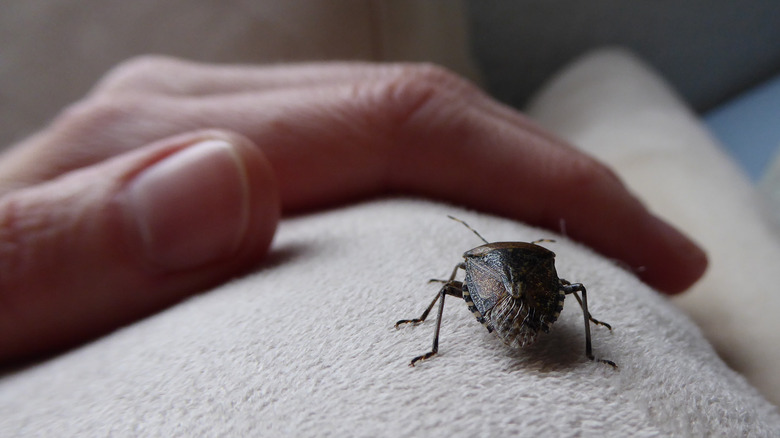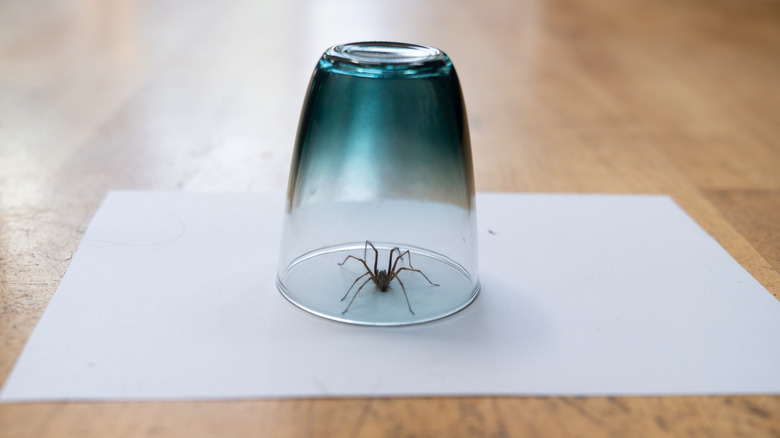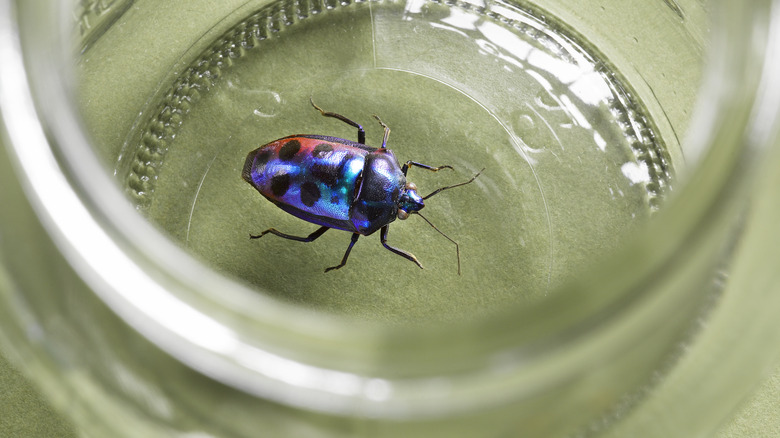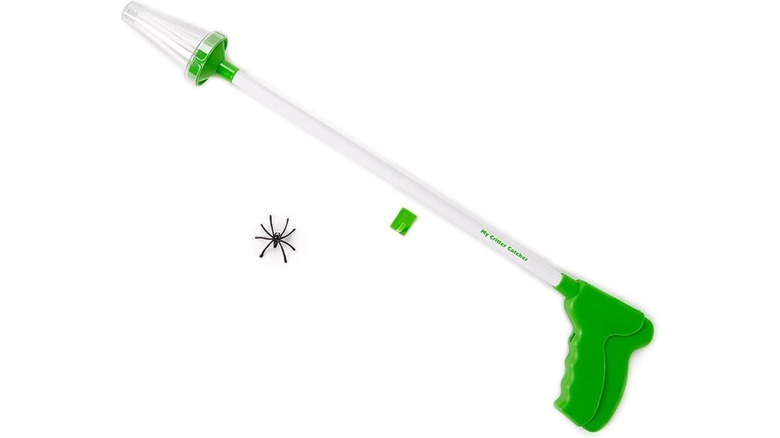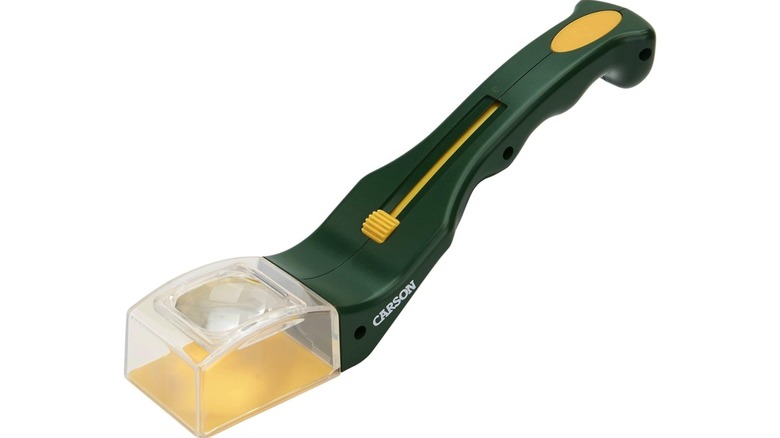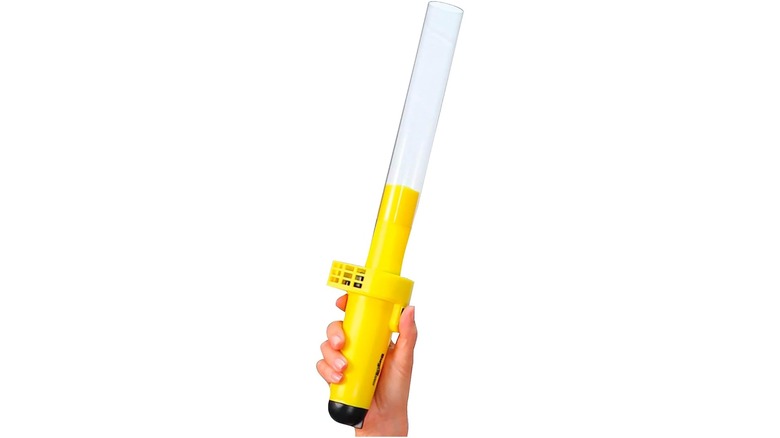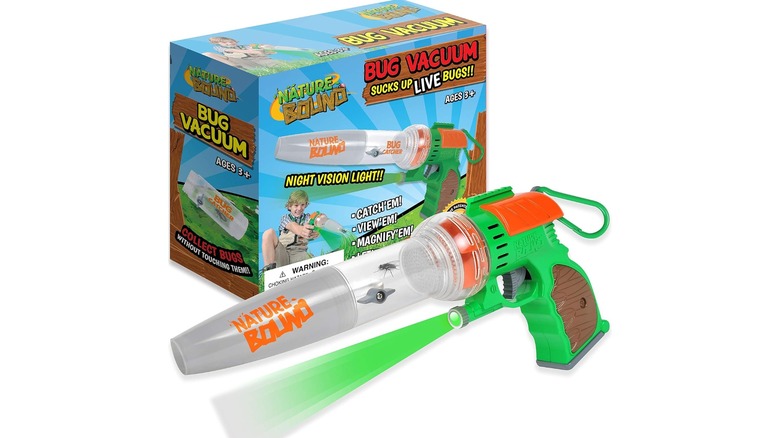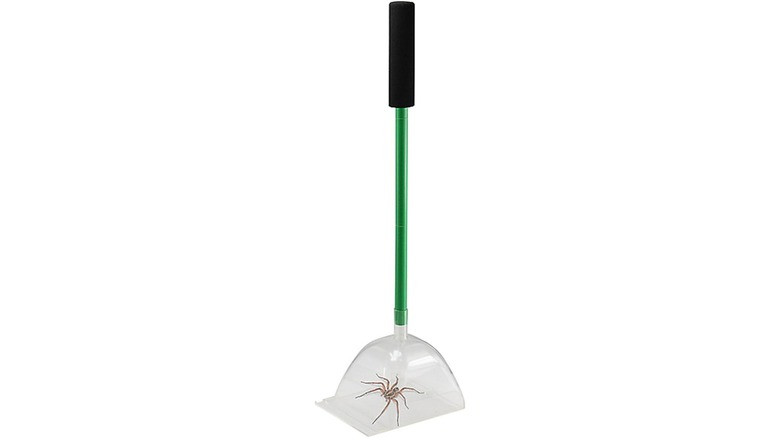7 Tools To Get Rid Of Uninvited Bugs In Your House Without Killing Them
We may receive a commission on purchases made from links.
While there are ways to repel bugs and prevent them from getting indoors, every once in a while, a creepy crawly will wander inside your home. Squishing or spraying them is one solution to deal with them, but it's not always the right one! If you're grossed out by squashing bugs or you just live by a do-no-harm mentality, then you can humanely relocate these uninvited guests instead. Plus, there are a few tools that can help you get this job done.
If you fancy yourself a hobby entomologist and don't mind getting close to bugs, there are plenty of insects you can relocate with your own two hands. Just make sure they aren't poisonous and can't injure you before doing so. For the rest of us, a bug-catching tool is the more user-friendly pick. We've rounded up some of the best tools to safely and humanely relocate bugs in your home. Ranging from DIY traps to dedicated bug-catching vacuums, there's a choice on this list for anyone, even if you're a bit squeamish.
Use a cup and a piece of paper
Trapping a bug in a cup or jar is a tried and true method, and you only need items you have around the house. Choose a see-through cup, jar, or container (it will help you keep tabs on where the bug is located). If possible, use cardstock or a thicker piece of paper. It's easier to keep the stiffer paper tight to the rim of the glass, which means less chance of an insect escapee.
There are two ways to trap the pesky critter: wait until the bug crawls onto the paper and then trap it with the glass, or trap it with the glass then slide the piece of paper underneath. The latter method tends to be easier, but you'll need to take extra care to avoid harming any delicate little insect legs. Once you have the bug trapped, release the bug outdoors, a distance away from your home so it's less likely to wander back.
Make a DIY humane live bug trap
This DIY live bug trap works well for humanely catching cockroaches, but it should work for other similar bugs too. Just keep in mind that this method only works for crawling bugs. You'll need some newspaper, tape, a glass jar, petroleum jelly, and food for bait (like a piece of bread, fruit, or vegetable). Stand the jar open side up and tape some newspaper around the outside rim. Make sure the newspaper reaches the ground or the surface the jar is sitting on to provide insects with a ramp to climb in.
Smear petroleum jelly along the entire inside rim of the jar and place the food bait inside the jar. Cockroaches and other crawling bugs will climb into the jar to get to the food, but they will have trouble climbing back out because of the petroleum jelly. Then, you can easily release the bugs by tipping the jar over and shaking them out.
Use the Critter Catcher to grab bugs from a distance
Aptly named, the Critter Catcher is designed to safely catch spiders and other bugs. This device has a handle that ends in a patented soft-bristle bug catcher. When you pull the trigger, the flexible plastic bristles open up. Place the device over the bug and release your grip, then the bristles will gently enclose around the pest, immobilizing it until you're ready to let it go. Once you're outside, squeeze the trigger to release the uninjured bug. The over two-foot-long handle means you don't need to make any direct contact with the insect, and it's also mess-free too since it's a humane catcher.
The brand says the device works on all bugs, though reviewers note that some smaller ones can wriggle away. For the most part, the Critter Catcher lists medium-sized bugs as great candidates for this tool. This includes spiders, cockroaches, stink bugs, scorpions, centipedes, and even flying insects like flies, bees, and moths. It may be difficult to catch fast-moving pests with this catcher, especially from ceilings or walls. And if you're particularly squeamish, you might prefer an option that completely encases the bug in a container rather than bristles.
Catch and inspect insects with the Carson BugView Quick-Release Bug Catching Tool
If you want to turn bug catching into a learning opportunity, try the Carson BugView Quick-Release Bug Catching Tool. This option has a short handle and a magnifying glass feature, so it's only suitable if you're comfortable getting up close and personal with bugs. It has a small, clear container section, which is designed to go over the insect, similar to trapping a pest with a cup or jar. Then, you slide the thumb-operated trapping slider into place to keep the bug contained inside.
The top of the catcher has a 5-time magnification lens so you can look at creepy crawlies in more detail. It's easy to use, so it's a great tool for bug-loving kids. Users just need to take care when closing the slider to make sure no bugs are accidentally harmed. This bug catcher is relatively small, so it can only catch bugs that fit within this chamber.
Vacuum up bugs with the Sonic Technology BugBuster BB100
For many of us, the vacuum cleaner is a tempting bug-catching tool, but our large units can do major harm to little insects. The Sonic Technology BugBuster BB100 is a bug-safe solution. It's a handheld device that catches bugs using suction. Press the button and it turns on with just enough suction power to trap bugs without injuring them, gently funneling flying and crawling bugs into its chamber.
This option is thin and long, which makes it more maneuverable than some other bug catchers. It can fit into tight spaces and corners that other options might not reach. The chamber entrance is on the smaller side, similar in diameter to a regular vacuum hose. This means it's suitable for smaller insects, but you might risk harming bugs that are larger than the chamber diameter. Once you've sucked up the bug, keep it trapped inside by popping on the safety cap, then relocate it outdoors. This device is cordless and runs on a single 9-volt battery.
Kids (and adults) can use the Nature Bound Bug Catcher Toy
The Nature Bound Bug Catcher Toy is a vacuum bug-catching device intended for kids — but there's no reason why adults can't use it as well! It has a more playful design, made of colorful plastic in a gun shape with a trigger to turn on the suction. Suck up the bug and observe it in the capture chamber, which has a built-in trap door to keep the bug contained, along with a magnifier so you can get a better look. When you're ready, open the trap door to release the creepy crawly.
Trying to catch a bug in a dark corner? This catcher has an LED light for better visibility. A carabiner clip makes it easy to carry this bug catcher around (which is useful for kids who are going bug hunting in the garden) or to hang it on a hook for storage. This device is cordless and requires four AA batteries to run.
Keep bugs contained with the Katcha Acrylic Live Trap Catcher
If you're scared of bugs, one of the most intimidating parts of relocating them is the chance that they might escape. So you can keep them trapped until you're ready to release them with the Katcha Acrylic Live Trap Catcher. This bug catcher has a long handle, so you can also keep a good distance away from creepy crawlies.
The trapper section is a large and clear acrylic dome that should be able to fit over most household bugs, and even small rodents and frogs. It's the largest option on our list, suitable for bigger pests like wolf spiders and house centipedes. Once the bug is trapped, slide the trap door closed and it will lock into place. This means no bug breakouts while you're walking outside! Once you're far enough away from your home, slide the door open and release the critter. Though this bug catcher keeps bugs well enclosed, you will need to manually slide the trap door, which means getting a bit closer. However, once it's locked in place, they won't be able to get out, so it's more reliable than the glass and paper method.
